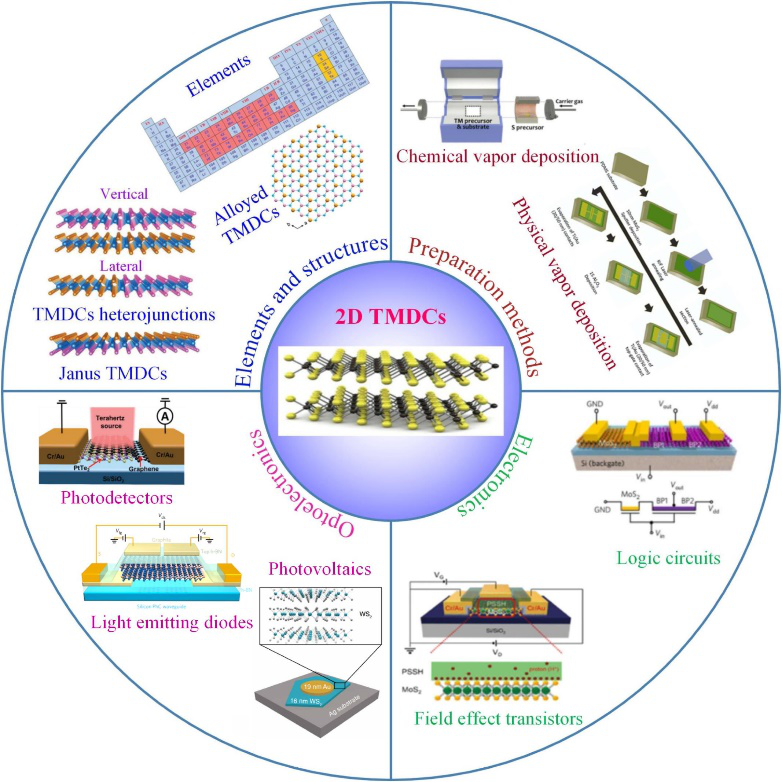
hotline:
17715390137
Tel/Wechat:
18101240246 (Technology)
0512-68565571
Email:mxenes@163.com (Sales Engineer)bkxc.bonnie@gmail.com
Scan the code to follow or search the official account on WeChat:
2D Materials Fronrier After paying attention,
click on the lower right corner to contact us,
Enter enterprise WeChat.
Professional Services Online

In recent years, two-dimensional transition metal chalcogenides (TMDCs) and their heterojunctions have become research hotspots at home and abroad due to their outstanding performance. Different from the zero band gap of two-dimensional graphene, two-dimensional TMDCs have a large forbidden band width and adjustable band gap, which makes them widely used in logic devices, optoelectronic devices and other applications, such as field effect transistors, logic Circuits, flexible electronic devices, photodetectors, photovoltaic devices, biosensing, etc., have demonstrated huge commercial application potential. However, in order to meet the needs of actual device applications, the synthesis of high-quality, large-area two-dimensional TMDCs still faces huge challenges.

In view of the current situation and future development, the Liao Wugang research group of Shenzhen University and the Zeng Xiangbin research group of Huazhong University of Science and Technology jointly wrote a review article entitled "Synthesis of two-dimensional transition metal dichalcogenides for electronics and optoelectronics", which systematically summarizes TMDCs and their differences. The preparation method of the mass junction, its application and research progress in electronic devices and optoelectronic devices, and pointed out the challenges and future development directions in this field. The author outlines the basic properties of two-dimensional TMDCs, summarizes in detail the various synthetic methods (including chemical and physical methods, etc.) of two-dimensional TMDCs and their heterojunctions in recent years, and systematically introduces their use in electronic devices (such as field effect transistors). And logic circuits, etc.) and optoelectronic devices (such as photodetectors, photovoltaic devices, light-emitting diodes and other devices). At the same time, the author also pointed out the problems to be faced in the large-scale growth of TMDCs and their heterojunctions, hoping to understand the research progress of two-dimensional TMDCs materials, the process parameters that affect their performance, and expand their use in future electronic devices and optoelectronics. The application of devices and other fields provides reference and reference for scientific researchers working in this field. The work was published on InfoMat (DOI: 10.1002/inf2.12161).
Information source: MaterialsViews
This information is from the Internet for academic exchanges. If there is any infringement, please contact us and delete it immediately

| Reminder: Beijing Beike New Material Technology Co., Ltd. supplies products only for scientific research, not for humans |
| All rights reserved © 2019 beijing beike new material Technology Co., Ltd 京ICP备16054715-2号 |